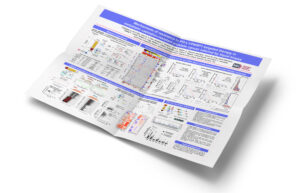Neurodegenerative diseases pose significant challenges in diagnosis and treatment, affecting millions worldwide. These conditions, including Alzheimer’s disease, cause progressive deterioration of the nervous system, leading to severe cognitive and physical impairments. Recent advancements in biotechnology have brought about a revolutionary approach to diagnosing these complex disorders: liquid biopsy. This innovative method has an impact on the field of neurology, offering a less invasive and potentially more accurate way to identify neurodegenerative conditions.
Liquid biopsy involves analysing biomarkers in bodily fluids, such as cerebrospinal fluid and blood, to detect signs of neurodegeneration. This technique allows researchers and clinicians to examine cell-free DNA (cfDNA) and other molecular indicators, providing valuable insights into the onset and progression of neurological diseases. The article will explore how liquid biopsy works, its advantages over traditional diagnostic methods, and the promising biomarkers being studied for various neurodegenerative conditions. Additionally, it will discuss the potential of this groundbreaking approach to transform the diagnosis and management of debilitating disorders like Alzheimer’s disease.
The challenge of diagnosing neurodegenerative diseases
Neurodegenerative disorders, primarily characterised by neuron loss, pose significant challenges in diagnosis and treatment. These conditions, including Alzheimer’s and Parkinson’s disease, affect millions worldwide. The complexity of these disorders stems from their heterogeneous nature, impacting specific subsets of neurons in different brain regions.
Current diagnostic methods
The diagnosis of neurodegenerative diseases often involves a multifaceted approach. Current methods include:
- Behavioural symptom assessment
- Biomarker analysis from blood and cerebrospinal fluid
- Neuroimaging techniques such as PET and MRI
- Brain conductivity and electrical activity measurements (TMS and EEG)
- Neuropsychological tests
Neuroimaging techniques, particularly MRI and PET, have significantly improved diagnostic quality. These methods provide valuable information about morphological and functional changes in the brain during different stages of neurodegenerative diseases.
Limitations of existing approaches
Despite advancements in diagnostic techniques, several limitations persist:
- Low specificity: Individual assessment methods and markers often lack specificity, necessitating costly and complex examinations for accurate diagnosis.
- Blood-Brain Barrier (BBB): The BBB presents a significant obstacle to effective treatment. It prevents nearly 99% of ‘foreign substances’ from entering the brain, limiting the success of many therapies.
- Limited efficacy: Current treatments primarily focus on managing symptoms rather than addressing the root causes of neurodegeneration.
- Invasive procedures: While some surgical techniques have shown promise, their clinical acceptance is limited due to concerns about long-term benefits and potential damage to the brain barrier.
- Early detection challenges: The effectiveness of therapies in slowing disease progression heavily depends on timely detection. However, identifying suitable biomarkers for early diagnosis remains challenging.
- Costly and limited accessibility: Advanced neuroimaging techniques like MRI and PET, while effective, are expensive and not widely available for routine medical screenings.
To address these challenges, researchers are exploring new diagnostic methods that allow earlier and more accurate disease detection. The focus has shifted towards identifying biomarkers in peripheral samples such as blood or cerebrospinal fluid, which could enable preventive screening and early identification of neurodegenerative processes.
How liquid biopsy works
Sample collection
Liquid biopsy involves analysing biomarkers in bodily fluids, offering a less invasive alternative to traditional tissue biopsies. Common biofluids used include plasma, serum, cerebrospinal fluid (CSF), urine, and saliva. For neurodegenerative diseases, CSF and blood are particularly relevant. CSF is obtained through lumbar puncture, a procedure where a needle is inserted into the subarachnoid space in the lumbar area. Blood samples are typically collected through venipuncture.
Biomarker analysis
Liquid biopsies can detect various molecular entities, including:
- Cell-free DNA (cfDNA): Double-stranded DNA fragments released from nucleated cells.
- Circulating tumour DNA (ctDNA): DNA released specifically by tumour cells.
- Extracellular vesicles (EVs): Membrane-bound subcellular moieties containing nucleic acids and proteins.
- MicroRNAs (miRNAs): Small non-coding RNA molecules.
These biomarkers are analysed using advanced techniques such as next-generation sequencing (NGS), digital PCR, and specialised assays like BEAMing (beads, emulsion, amplification, and magnetics).
Cerebrospinal fluid vs blood cfDNA
CSF and blood offer distinct advantages for liquid biopsy in neurodegenerative diseases:
- CSF:
- Direct contact with the brain’s extracellular space.
- Lower background (healthy) cfDNA, allowing for higher sensitivity in detecting disease-specific markers.
- Particularly useful for diseases with significant CNS involvement, like Alzheimer’s disease.
- Blood (plasma/serum):
- More accessible and less invasive than CSF collection.
- Suitable for frequent sampling and longitudinal monitoring.
- May contain lower concentrations of CNS-specific biomarkers due to the blood-brain barrier.
Data Interpretation
Interpreting liquid biopsy results involves:
- Quantifying biomarker levels: For example, decreased CSF Aβ42 levels may indicate Alzheimer’s disease.
- Analysing genetic mutations: Specific mutations can be indicative of certain neurodegenerative conditions.
- Assessing methylation patterns: Epigenetic changes can provide insights into disease progression.
- Comparing results to established thresholds and reference ranges.
Advanced bioinformatics tools are often employed to analyse the complex data generated from liquid biopsies, helping to stratify patients and guide clinical decision-making.
Promising biomarkers for neurodegenerative diseases
Proteins
Protein biomarkers have shown significant potential in identifying and managing neurodegenerative diseases. Neurofilament proteins (NFPs) and neurogranin (Ng) have emerged as promising candidates for diagnosing conditions such as Alzheimer’s disease (AD), Parkinson’s disease (PD), and Huntington’s disease (HD). NFPs, which provide structural support within neuronal axons, have been observed to accumulate abnormally in the brains of individuals with these disorders, potentially leading to neuronal injury.
Neurogranin, a neuron-specific protein expressed in the hippocampus and cortex, plays a crucial role in synaptic plasticity and long-term potentiation. Studies have shown that Ng levels significantly decrease in the cortex and hippocampus of AD patients. Interestingly, increasing Ng expression through stereotaxic hippocampal injections of a lentivirus has improved cognitive decline in mouse models of AD.
Nucleic acids
Cell-free DNA (cfDNA) has gained attention as a potential biomarker for neurodegenerative diseases. cfDNA consists of double-stranded DNA fragments released from cells that circulate in the bloodstream and other bodily fluids. Elevated levels of cfDNA have been associated with stroke severity and poor outcomes during the first three months of recovery.
MicroRNAs (miRNAs) have also shown promise as biomarkers for AD. Studies have identified differential expression of miRNAs in AD patients, with miR-125b and miR-223 demonstrating increased sensitivity and specificity for AD prediction when combined. Additionally, tRNA-derived RNA fragments (tRFs) have emerged as potential biomarkers, with implications linked to neuronal cell death due to oxidative stress.
Metabolites
While the provided factual key points do not specifically mention metabolites as biomarkers for neurodegenerative diseases, it’s important to note that metabolomic profiling has shown potential in identifying novel biomarkers for conditions like AD. Future research may focus on identifying specific metabolites that could serve as reliable indicators of disease progression or treatment response.
In conclusion, the development of liquid biopsy techniques has opened new avenues for diagnosing and monitoring neurodegenerative diseases. By analysing biomarkers in CSF and blood, researchers aim to enable earlier detection and more accurate prognosis of conditions like AD, potentially revolutionising clinical approaches to these devastating disorders.
Conclusion
The advancements in liquid biopsy techniques have opened up new possibilities to diagnose and monitor neurodegenerative diseases. By analysing biomarkers in cerebrospinal fluid and blood, researchers are making strides to enable earlier detection and more accurate prognosis of conditions like Alzheimer’s disease. This approach has a significant impact on the field of neurology, offering a less invasive and potentially more precise way to identify these complex disorders.
Looking ahead, the continued development of liquid biopsy methods holds promise to transform the diagnosis and management of debilitating neurological conditions. As research progresses, this groundbreaking approach could lead to more targeted treatments and improved patient outcomes. The potential to detect neurodegenerative diseases at earlier stages may open up new avenues to slow or even prevent their progression, bringing hope to millions affected worldwide.



